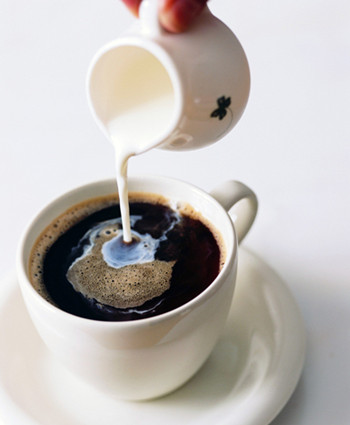Going to Starbucks isn't just for a cup of coffee.

When asked where the world's most popular Starbucks is, most Americans say Seattle, Philadelphia, New York, Washington. But that's not the case. The correct answer is Tokyo.
For Americans, Starbucks coffee is as indispensable a meal drink as Coke and Pepsi. Now, the Seattle-based US coffee chain is aggressively pursuing its "Asia strategy" to tap into the huge Asian market in the shortest time possible. Just four years after opening its first Tokyo store, Starbucks now has 250 stores in 10 Asian countries (125 in Japan, 12 in China, 11 in Thailand and 5 in South Korea). In addition to opening a beverage chain, the group plans to open its first coffee roaster in Asia in the near future.
Today, from Tokyo to Seoul, Beijing to Bangkok, Starbucks is gradually bringing Western-style black coffee and various sparkling coffee drinks to Asian markets where tea culture prevails. "We expected Starbucks to sell well in Asia, but we didn't expect it to grow so fast," said Keiko Nakata, head of the Starbucks chain in Japan.
Indeed, in a market with a long history of tea culture and dominated by the food culture of the whole region, the success of Western-style coffee and its rapid development are indeed unexpected. Market analysts explain this. They believe that Starbucks 'success in Asia undoubtedly includes its own "unique taste" factor. Here, people can not only enjoy more than 15 kinds of world-famous highland coffee and mixed coffee, but also taste a variety of freshly baked pastries, and can buy coffee-making related appliances and related small commodities. This is rare in a regular coffee shop.
In addition, the brand effect of Starbucks, a world-renowned coffee brand, has also played a huge role in opening up the Asian market. In the minds of many Asian consumers, Starbucks is a symbol of health, success and status. As a result, at a time when Asia's economies are recovering from the financial crisis and many Asian consumers are paying more attention to their consumption levels, more and more middle-class Asians are willing to taste Starbucks coffee for twice, three or four times the price of tea drinks in order to upgrade their consumption in food or fashion.
Another important factor that attracts Asian consumers to Starbucks is its elegant and unique cultural environment. Wooden tables and chairs, elegant music, elegant coffee making equipment, for consumers set off an elegant, leisurely atmosphere. What's more, despite being in a foreign country, the interior decoration of Starbucks Asian stores can still maintain the original American style. So starbucks is attracting more and more asian consumers with a unique advantage over crowded, smoky local coffee shops in tokyo and tea shops stacked with rickety plastic benches in southeast asia.
At present, Starbucks 'main customers in Asia are young, white-collar and fashion-seeking teenagers. Starbucks in the philippines is full of mobile phones and fashion-conscious young people; starbucks in thailand is also full of fashion-conscious young people. Although Starbucks coffee is expensive in Thailand, and a cup of coffee can be worth four lunches, many young people are unscrupulous in order to be fashionable. Driven by them, Starbucks 'customer base is expanding rapidly. At Singapore, you can see big corporate bosses sitting next to leather-clad rockers, and at other Asian Starbucks chains, you can even see parents bringing their children to big dinners as part of a family outing. This shows the popularity of this Western coffee.
However, with the continuous expansion of the consumer team, Starbucks is facing more and more problems, the most important of which is how to position the future price of Starbucks coffee drinks as its popularity gradually expands, and how to increase the number of branches as soon as possible, while improving related services. Because no one wants to wait in line at its door just for a cup of coffee.
Important Notice :
前街咖啡 FrontStreet Coffee has moved to new addredd:
FrontStreet Coffee Address: 315,Donghua East Road,GuangZhou
Tel:020 38364473
- Prev

Coffee experience Coffee contact process of Chinese people
Speaking of my first contact with coffee, I'm afraid I have to talk about it since I was a child. From the beginning of my learning, I remember that my mother would make this cup of black water. My mother grew up in East Africa, the birthplace of coffee, and didn't come back to China until she was a teenager. Coupled with the fact that my father stayed abroad when he was young, their combination made the family have a habit of drinking coffee all the time. When we were young, our mother made us milk.
- Next

How people drink coffee in different countries
People drink coffee in different countries, but if you ask how many ways to drink coffee, I am afraid no one can say clearly. There are as many ways to drink coffee as there are countries in the world. A third of the world's population drinks coffee, but no two countries seem to drink coffee the same way. People from Arab countries
Related
- How did the Salvadoran coffee industry develop in Central America?
- What exactly does the golden cup extraction of coffee mean?
- The Origin of Coffee flower
- [2023 Starbucks World Earth Day] there are more meaningful things besides free Starbucks coffee!
- What kind of coffee is there in Spain? 9 Flavors of Spanish Coffee
- Aromatic African coffee| Kenya's coffee culture and historical production area
- Liberica Coffee Bean knowledge: the characteristics of Liberian Coffee beans of the three original species of Coffee beans
- The origin and formula of Spanish latte introduces the taste characteristics of Bombon coffee in Valencia, Spain.
- How to adjust the solution of over-extracted coffee
- What is the tasting period of coffee beans? What is the period of coffee and beans? How should coffee wake up and raise beans?

